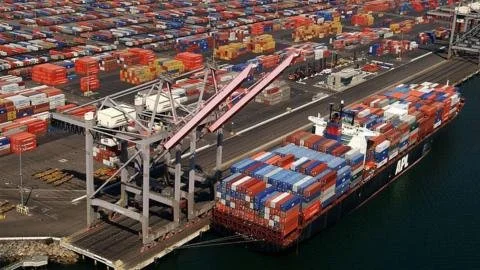Global Economy on the Rise: IMF Sees Brightening Prospects Amid Eased Tariffs
The International Monetary Fund (IMF) has recently upgraded its global economic growth forecast, attributing much of this positive shift to the softening of US tariffs on goods. This adjustment comes after a notable increase in US imports, as businesses rushed to bring in products before anticipated higher import taxes could take effect. This influx, alongside various government measures aimed at fostering economic growth, has contributed to the IMF’s optimistic outlook.
The IMF’s new projections suggest a global growth rate of 3% in 2025 and 3.1% in 2026, enhancements from earlier estimates of 2.8% and 3% respectively. However, these figures still fall short of the 3.3% growth previously forecast in January and the historical average of 3.7% prior to the pandemic. The organization also highlighted the phenomenon of trade “front-loading”, where businesses stockpiled goods to evade the impending tariffs, which could create potential economic pitfalls in the future, such as excess inventory and storage costs that could impede future imports.
The UK’s growth is anticipated to be 1.2% this year and 1.4% in 2026, maintaining its standing as the third fastest-growing economy among advanced nations, following the US and Canada. However, the IMF cautioned that the current easing of trade tensions, while a positive sign, remains fragile and that the global economy is still facing significant challenges due to the lingering effects of tariffs.
Pierre-Olivier Gourinchas, the IMF’s chief economist, pointed out that despite the temporary boost from the influx of imports, the economy could experience a slowdown as this momentum diminishes later in the year. Furthermore, the IMF expects global inflation rates to decline over the coming years, predicting 4.2% in 2025 and 3.6% in 2026, but warned that inflation may remain elevated in the US due to the continued impact of import taxes. With Trump’s trade policies having disrupted traditional global trade dynamics through various tariffs and negotiations, the outlook for the future remains uncertain, pending the outcomes of ongoing trade discussions with partners like China, Japan, and the EU.

